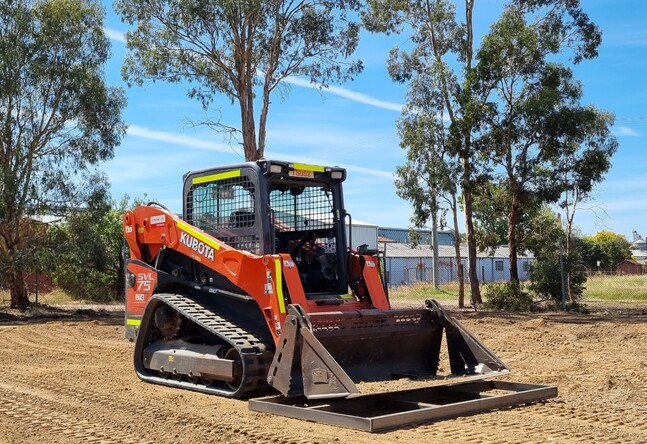What is the difference?
The main difference between the compact tracked loaders or positracks and skid steer loaders is that one has tracks and the other has wheels. They can both feature radial or vertical lift configurations, and can carry out a wide range of jobs, whether it be digging, lifting pallets, landscaping, trenching and more.
With the different undercarriages, operators are then faced with multiple factors to consider, including cost, weight, maneuverability and application. Generally, skid steer loaders are lighter than positracks, allowing skid steer loaders to be transported easier. However, positracks usually offer a smoother ride and better operator comfort due to the even weight distribution across the tracks as opposed to four individual points on wheeled machines.
What a skid steer loader does best
A skid steer is ideal for jobs where the tracks of a positrack can be an impediment. In certain circumstances - especially those jobs where rotating the machine in a tight space is required - a wheeled skid steer can offer the range of motion that a positrack cannot.
For jobs where ongoing use of a road’s asphalt or concrete surface is required, a wheeled skid steer can also be preferable given that a positrack’s tracks will wear out faster in such conditions. The same also applies to demolition jobs, as debris can be more problematic for a positrack to navigate than for a wheeled skid steer.
The downside to a wheeled skid steer is the same factor that makes a positrack great. Although a wheeled skid steer can navigate uneven terrain well, it’s less well-suited for use in porous terrain.
What a positrack does best
In certain conditions, a positrack can operate where lots of other construction equipment would be unable to do so. Positracks can often be seen at work in muddy, damp, hilly, and cramped conditions, and other areas where wheels wouldn’t work effectively.
Because positracks are so tough and versatile in the environments that they’re well-suited for, they can be cost-effective to use in comparison to other equipment that can sustain wear and tear. The Covid-19 era has re-emphasised the importance of cost savings in many projects, and it’s here a machine like the positrack can be fantastic for the efficiency it offers.
Nonetheless, it’s also necessary to keep in mind the positrack can also have its limitations. For example, it has an operating radius limited to 200 degrees to the left and right, which means any job that requires greater range of motion will require another machine.

